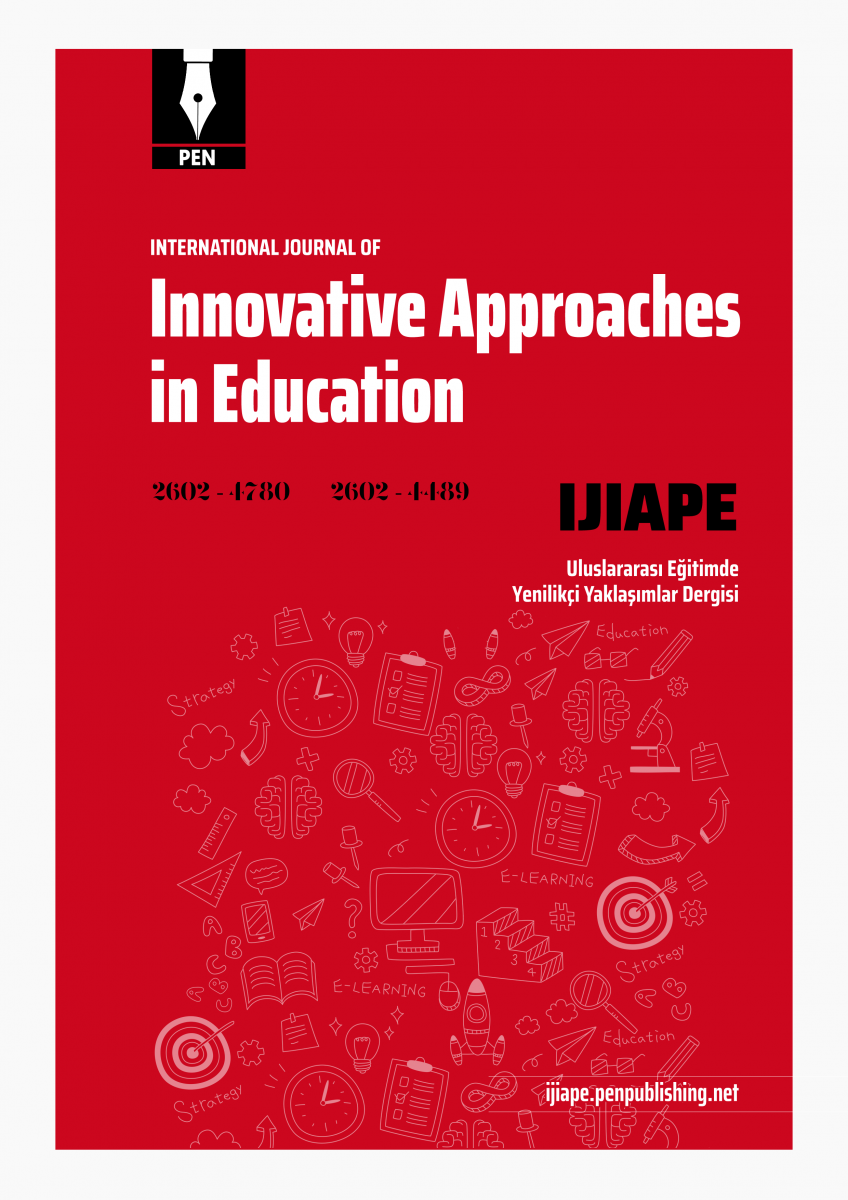- Beran, T., & Li, Q . (2005) Cyber-harrasment: A new method for a behavior. Journal of Educational Comoputing Research, 32(3), 137-153. [Google Scholar]
- Braun, V., & Clarke, V. (2021e). Thematic analysis: A practical guide. SAGE. [Google Scholar]
- Chen, Q., Tang, J., Zhu, Y., & Chan, K. L. (2024). The role of school climate on student disclosure of private information and cyberbullying: a comparison of regular and vocational school students in China. Frontiers in public health, 12, 1336617. [Google Scholar]
- Dikmen, M., & Çağlar, A. (2017). Examination of sensitivity of teacher candidates towards cyberbullying in terms of different variables. Fırat University Journal of Social Sciences, 27(2), 101-111. https://doi.org/10.18069/firatsbed.346489 [Google Scholar] [Crossref]
- Gao, J., Yin, H., & Han, Z. (2024). The effects of victims' reactions on bystanders' perceived severity and willingness to intervene during school bullying: A survey experiment study. Social Psychology of Education, 1-24. [Google Scholar]
- Giménez-Gualdo, A.-M., Arnaiz-Sánchez, P., CerezoRamírez, F., & Prodócimo, E. (2018). Teachers' and students' perception about cyberbullying. Intervention and coping strategies in primary and secondary education. Comunicar, 26(56), 29–38. https://doi.org/10.3916/c56-2018-03 [Google Scholar] [Crossref]
- Mattioni, L., Green, V. A., Hodis, F., & Lynch, T. E. (2016). Perceptions of cyberbullying among teachers and senior management. KAIRARANGA, 17 (1), 56-64. https://www.kairaranga.org.nz [Google Scholar]
- Meadows, B., Bergal,J., Hellings,S., Odell, J., Piligan, E., & Howard,C., (2005). The web: The bullys new playground. People, March 21, 152-155. [Google Scholar]
- Mitchell, K.J., Ybarra, M. & Finkelhor, D. (2007). The relative importance of online victimization in understanding depression, delinquency and substance use. Child Maltreatment. 12 (4), 314 -324. [Google Scholar]
- Patchin, j. W. & Hinduja ,S. (2006). Bullies move beyond the schoolyard:A pre-liminary look at cyberbullying. Youth Violence and Juvenile Justice, 4 (2), 148-169. [Google Scholar]
- Rajbhandari, J. & Rana, K. (2023). Cyberbullying on social media: An analysis of teachers’ unheard voices and coping strategies in Nepal. International Journal of Bullying Prevention, 5(2), 95-107. [Google Scholar]
- Samara, M., Da Silva Nascimento, B., El Asam, A., Smith, P., Hammuda, S., Morsi, H., & Al-Muhannadi, H. (2020). Practitioners' perceptions, attitudes, and challenges around bullying and cyberbullying. International Journal of Educational Ethics, 12(2), 8-25. [Google Scholar]
- SchoolSafety.gov. (2024). Bullying and cyberbullying prevention strategies and resources . US Department of Education. Retrieved on 24 October from: https://www.schoolsafety.gov/sites/default/files/2024-09/SchoolSafety.gov_Bullying%20and%20Cyberbullying%20Prevention%20Strategies%20and%20Resources_508.pdf [Google Scholar]
- Siddiqui, S., & Schultze-Krumbholz, A. (2023). Successful and emerging cyberbullying prevention programs: a narrative review of seventeen interventions applied worldwide. Societies, 13(9), 212. [Google Scholar]
- Styron, R.A., Bonner, J.L., Styron, J.L., Bridgeforth, J., & Martin, C. (2016). Are teacher and principal candidates prepared to address student cyberbullying. Journal of At-Risk Issues, 19(1), 19-28. [Google Scholar]
- Tanrikulu, I. (2018). Cyberbullying prevention and intervention programs in schools: A systematic review. School Psychology International, 39 (1), 74–91. https://doi.org/10.1177/0143034318754612 [Google Scholar] [Crossref]
- Thompson, R. (2022). Cyberbullying intervention – Practical considerations for teachers . Teacher Magazine.https://www.teachermagazine.com/au_en/articles/cyberbullying-intervention-practical-considerations-for-teachers [Google Scholar]
- Tosun, N., & Akcay, H. (2022). Cyberbullying/cyber-victimization status, cyberbullying awareness, and combat strategies of administrators and teachers of pre-school education institutions. International Journal of Technology in Education and Science, 6 (1), 41–73. https://doi.org/10.46328/ijtes.336 [Google Scholar] [Crossref]
- Tunca, G., & Geleri, G. (2020). Investigation of cyberbullying and victimization among adolescents in terms of school types . Journal of Social Sciences Research , 9(1), 10-18. [Google Scholar]
- Vandebosch ,H., & Clemput, K.V. (2008) Defining cyberbullying: A Qualitative research into the perceptions of youngsters. Cyberpsychology and Behavior . 11 (4), 499-503. [Google Scholar]
- Ybarra, M. & Diener-West, M., Leaf, P.J. (2007). Examining the overlap in internet harrasment and school bullying: İmplications for school intervention . Journal of Adolescent Health, 41, 42- 50. [Google Scholar]
- Ybarra, M., & Mitchell, K. (2004a). Online agressor / targets, agressors and targets: A comparison of associated youth charecteristics. Association for Child Psychology and Psychiatry, 45 (47), 1308-316. [Google Scholar]
- Ybarra, M., & Mitchell, K. (2004 b ). Youth engaging in online harrasment: Association with caregiver-child relationships, internet use and perso nal characteristics. Journal of Adolescence, 27, 319-336. [Google Scholar]
- Ybarra, M., & Mitchell, K. (2007). Prevelance and frequency of internet harrasment instigation: İmplications for adolescent health. Journal of Adolescent Health. 41, 189-195 . [Google Scholar]
- Yıldırım, A. F. & Yazgan, Ç.Ü. (2022). Saldırganlığın Dijital Ortamda Yeniden Üretimi: Üniversite Öğrencilerinin Saldırganlık ve Siber Zorbalık/Mağduriyet Deneyimlerinin İncelenmesi. TRT Akademi, 7 (15), 648-675. DOI: 10.37679/trta.1110739 [Google Scholar]
- Yot-Domínguez, C., Guzmán Franco, M.D., & Duarte Hueros, A. (2019). Trainee teachers' perceptions on cyberbullying in educational contexts. Social Sciences, 8 (1), 21. https://doi.org/10.3390/socsci8010021 [Google Scholar] [Crossref]
- Zhu, C., Huang, S., Evans, R., & Zhang, W. (2021). Cyberbullying among adolescents and children: A comprehensive review of the global situation, risk factors, and preventive measures. Frontiers in Public Health, 9, 634909. https://doi.org/10.3389/fpubh.2021.634909 [Google Scholar] [Crossref]
|

